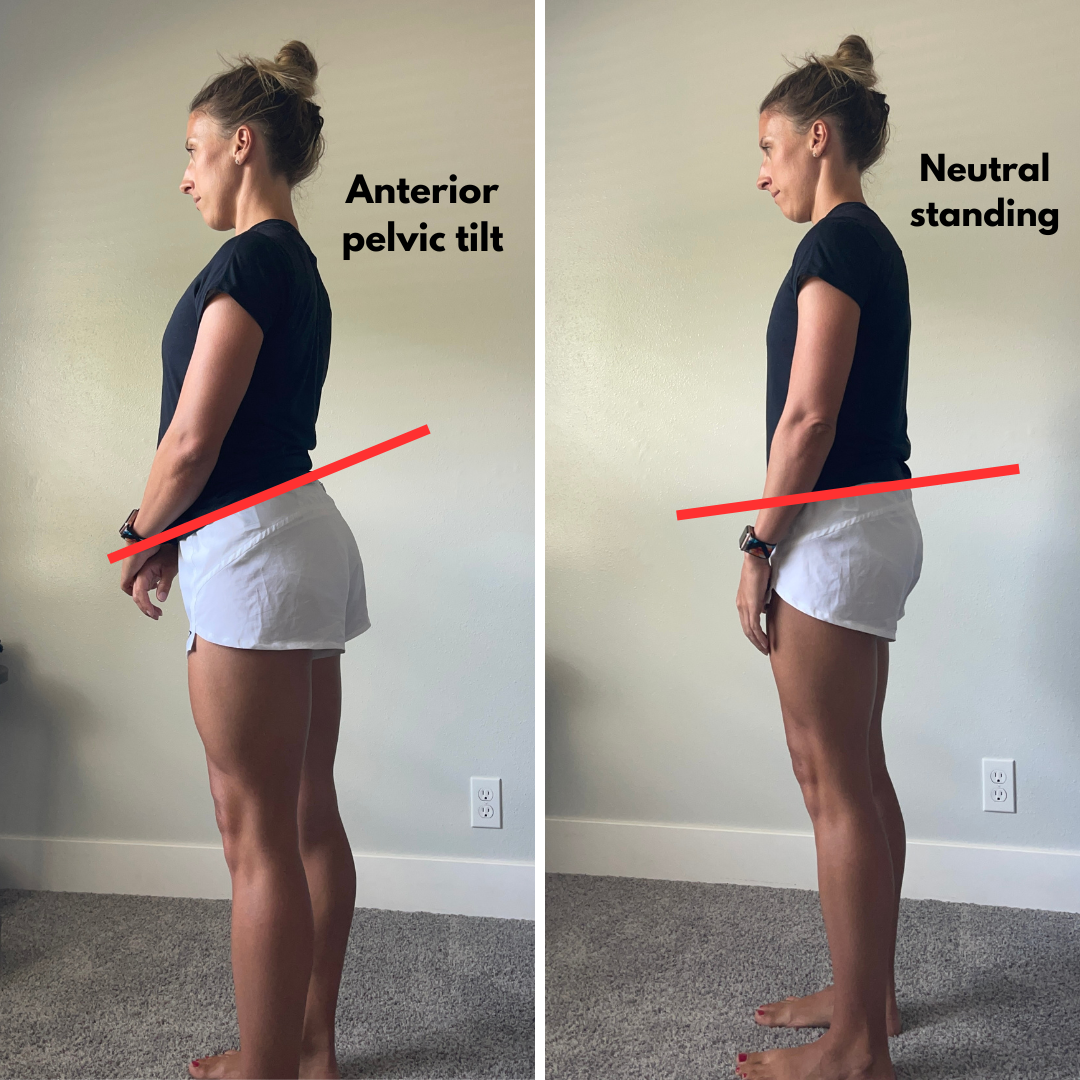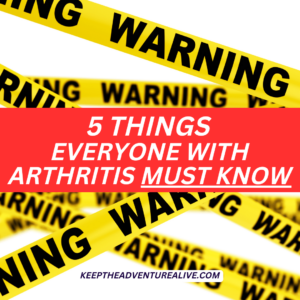If you are dealing with front of hip pain, commonly known as hip flexor tightness- it’s possible to find relief! The key is finding out why it is happening then completing movements that don’t flare up the pain. As a physical therapist, hip flexor tightness is common in patients with hip osteoarthritis and knee osteoarthritis. In this article you’ll find out why it is likely happening and what you can do about it.
Muscles in the front of your hip
First, it’s important to know what muscles are in the front of your hip that could be contributing to your pain.
The hip flexors are a group of muscles that work together to bend the hip joint into a marching position.
The primary hip flexor muscles include the iliopsoas, which is composed of two muscles: the psoas major and the iliacus, as well as the rectus femoris muscle, one of the quadriceps muscles.
The main job of the hip flexors is to facilitate movement at the hip joint, particularly in activities involving hip flexion, such as walking, running, cycling, and kicking.
They play a crucial role in activities that require lifting the thigh or bringing the knee toward the chest. For example, when you take a step forward while walking, the hip flexors contract to lift the leg and swing it forward.
More importantly, the hip flexors are involved in maintaining proper posture and providing stability to the pelvis and lower back. When these muscles are tight, this is why you may experience lower back pain.
They work in coordination with other muscles, including the abdominal muscles, to support the spine during activities like sitting upright, standing, and performing exercises that involve core stabilization.
What causes hip flexor tightness?
As a physical therapist who specializes in helping those with osteoarthritis, I commonly see hip flexor tightness exist with hip and knee osteoarthritis.
There are 3 primary reasons you may be experiencing tightness and front of hip pain, which include:
- Presence of anterior pelvic tilt which is refers to an excessive arch in your lower back
- Forward lean when walking
- Excessive time spent in a sitting position
Let’s dive a little deeper into each of these. Please note, your hip flexor tightness could be caused by one of these or a combination. This is also not an exhaustive list. If the causes below don’t resonate with you, there is a change your front of hip pain may be caused by another source.
1. Anterior Pelvic Tilt
This is a common posture that you may not even know that you have. It can also be referred to as lumbar lordosis.
As you can see in the picture below, this posture is characterized by a tipping forward of the pelvis, leading to an increased arch.

This posture can lead to shortened hip flexors as well as tightness of the back of the legs. When your pelvis is tilted forward, the muscles that attach to it, specifically the glutes (buttocks muscles) aren’t able to work properly.
Without the appropriate muscles working, other muscles try to make up for it by working extra hard. This can lead to irritation and pain.
A few causes for this to occur are:
- changing the way you stand and move because of pain
- increased weight gain in abdomen
- muscle weakness and imbalances
If you look at yourself in the mirror from the side, do you notice that you tend to stick your chest and buttocks out? Do you have an arch in your back?
We will talk about how to fix this later in the article.
2. Forward lean when walking
If you have knee osteoarthritis, hip osteoarthritis, spinal stenosis, or degenerative disc disease, you may find yourself leaning forward when you walk.
By doing so, you put stress on your lower back muscles also called the erector spinae as well as causing the muscles in the front of your hip to shorten. When these muscles shorten, they aren’t able to perform like they need to and you end up relying on other muscles and structures to help instead.
If you begin compensating with other muscles that are picking up the slack, they become irritated and overworked.
It’s interesting though, one study found in a population of those with knee osteoarthritis that a verbal cue of telling someone or thinking about standing up straighter didn’t fix the front of the hip pain or the hip flexor tightness (Preece et al, 2023).
In my opinion, when participants tried to stand up straight, they ended up with an anterior pelvic tilt as it’s hard to get into a neutral standing position if you have hip flexor tightness.
In order to fix the hip flexor tightness you need more than stretching. Stretching may actually make it worse. Keep reading to learn more.
3. Excessive time spent sitting
When you’re sitting, you are usually bent at the hip, torso upright and legs in front of you.
Now imagine the group of hip flexor muscles, one of them attaches to the top of your hip bones and goes down to the knee. When you are sitting, that muscle becomes shortened. Especially when sitting for longer periods of time, you can imagine how that muscle can become tight.
Then you go to stand up and you are trying to stand up straight but that muscle tightness isn’t allowing for it. It then becomes irritated.
Avoid this if you have front of hip pain
One common exercise that is prescribed for beginners and for those with osteoarthritis is marching in place. This can be a good way to improve weight bearing for walking and as an aerobic exercise.
But, if you are experiencing front of hip pain, marching in place may not feel great to you, especially at repetition.
While this is certainly not a bad exercise, you do want to avoid doing a lot of repetitions of a movement that causes pain. Marching is typically a triggering movement with tight hip flexors.
If you have an anterior pelvic tilt posture, marching in place likely will aggravate your hip flexor.
Instead let’s work on reducing the anterior pelvic tilt and getting your hips in a better position to reduce pain and stiffness.
*Once pain is consistently gone, repetitive marching is totally fine to do as an exercise*
Try these 3 movements instead!
When it comes to getting your hips into a better position to improve your walking posture and allow your muscles to work appropriately, here are some movements to try.
Keep in mind these movements should not flare up pain.
1. Hip bridges
For this bridge, you will be focusing on your hip position. Elevating your feet is optional but I find it can help to put your hips in a better position. Find an object that is a few inches high to start with.
This movement doesn’t need to be done on the floor but the more firm the surface the better.
When reducing hip flexor tightness, you want to be able to turn off the hip flexors and effectively use other muscles.
Your hamstrings are very important to help take some of the load from the front of your hip muscles.
The main goal of this movement is keep your lower back in contact with the floor as you feel the backs of your legs (your hamstrings) contract.
Try anywhere from 5-15 repetitions as long as it doesn’t cause significant pain. Focus on quality over quantity.
2. Wall stand with overhead reach
One of the most important ways to reduce anterior pelvic tilt and reduce front of hip pain is being able to keep your hip stable as you move your limbs.
This movement requires you to keep your hips stable as you move your arms. Try to complete 10-20 repetitions raising one arm at a time. To progress, raise both arms at the same time.
To ensure you’re getting benefit from this movement, make sure you lower back does not arch away from the wall as you lift your arms.
3. Wall stand with heel lift
Taking the above exercise to the next level, now you will work on keep your hips stationary and your lower back in contact with the wall as you lift one heel then the other.
This will now begin to emulate walking. You will use the wall as feedback to help to reduce the anterior pelvic tilt as well as the forward lean.
Set a timer and try to complete alternating repetitions for 30-60 seconds.
Remember, you are focusing on quality with this movement.
Relieve hip flexor tightness
When you are looking to reduce front of hip pain, it’s important to first understand what is causing it, then the movements make much more sense.
Choosing just one of these movements to master first is the best way to begin helping your hips. The bridge is a great movement to focus on first.
Reduce the amount of time you are spending in a repeated marching exercise to avoid continuing to aggravate the muscles. Focusing on posture, especially when walking is key.
If you are looking for a place to get started and find the best ways to strengthen your arthritic joints, join the free 4 Day Jumpstart your Arthritis Adventure Challenge by clicking the button below:
Alyssa Kuhn

If you are looking to regain your active life but are unsure where to start, join the revolutionary membership, Adventurers for Life. This is a step-by-step path that not only will help you find pain relief but will help you unlock adventure. You’ll get workouts, tests to pass to make sure you are on the right track, community events and MORE.
Disclaimer: This post is for general informational purposes only. It should not be used to self-diagnose and it is not a substitute for a medical exam, cure, treatment, diagnosis, and prescription or recommendation. It does not create a doctor-patient relationship between Dr. Kuhn and you. You should not make any change in your health regimen or diet before first consulting a physician and obtaining a medical exam, diagnosis, and recommendation. Move Well Age Well, LLC and Dr. Alyssa Kuhn, PT, DPT are not liable or responsible for any advice, course of treatment, diagnosis or any conclusions drawn, services or product you obtain through this post, video or site. Complete all exercises at your own risk.
References
- Preece SJ, Alghamdi W, Jones RK. Individuals with knee osteoarthritis demonstrate increased passive stiffness of the hip flexor muscles. Knee. 2023 Mar;41:302-310. doi: 10.1016/j.knee.2023.01.007. Epub 2023 Feb 16. PMID: 36801496.




